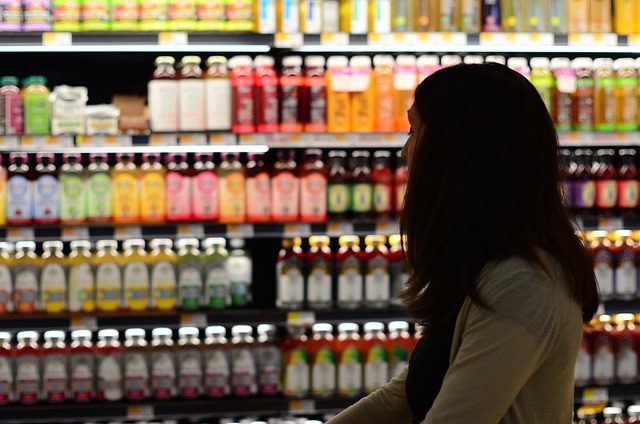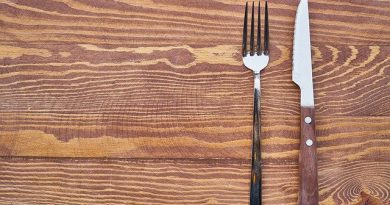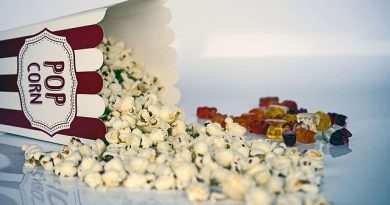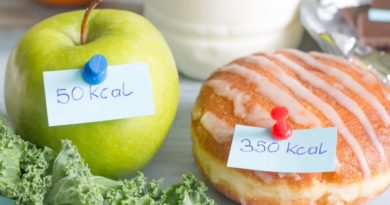Don’t Be Fooled By These 5 Food Packaging Tricks
While I don’t want to say brands are out to purposely trick you… ok, there’s no other polite way to say it — THEY’RE TRICKING YOU ON PURPOSE! The fact of the matter is that brands do a lot of testing and research to develop some food packaging tricks to get you to make a purchase. When you go to the grocery store and walk up and down the aisles, think about how many products are on those shelves.
Let’s use the example of the cereal aisle. When you walk into the cereal aisle, it’s like a little kid’s heaven. With all of that carb and sugar-filled goodness right there at their fingertips, it’s like they could literally sit on the floor of the grocer and just eat it straight from the box.
But did you ever stop to think about what actually makes you grab a box or package of something from the shelf and consider purchasing it? It’s those little subconscious cues that create some of the best food packaging tricks out there. These tricks are essentially causing you to purchase something without really even wanting it.
In this article, we will unpack some of the biggest food packaging tricks out there that brands don’t want you to know.
Disclaimer: This article is for informational purposes only and is not meant to treat or diagnose any condition. It is recommended that you speak with your doctor before starting any exercise program, changing your daily nutrition, or adding any supplements to your regimen.
Table of contents
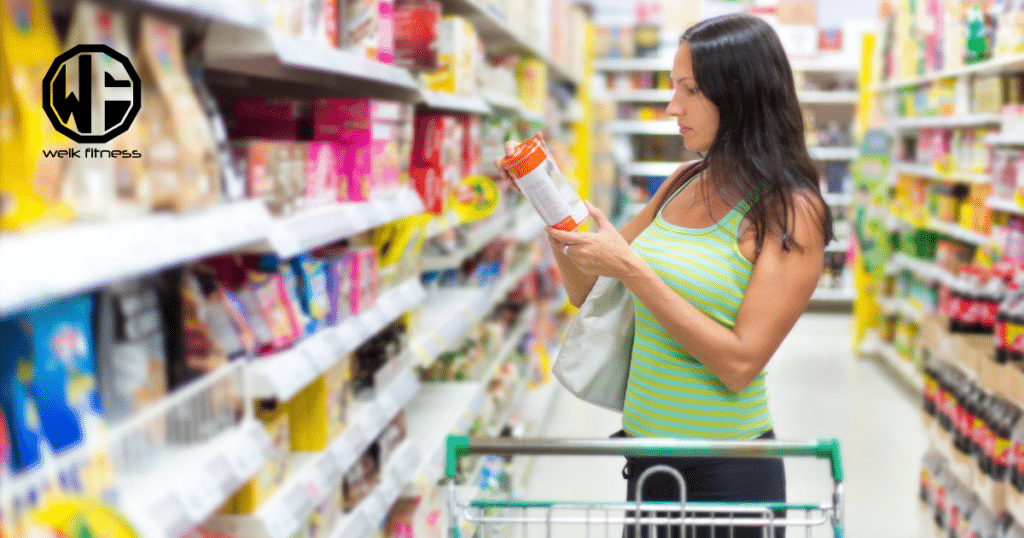
5 Food Packaging Tricks You Need to Know About
Don’t get fooled by these food packaging tricks that brands are great at. Learn the below so you’re not their next victim.
1. Shelf Placement
One of the oldest food packaging tricks brands don’t want you to know is shelf placement. The real estate that a product takes up in a grocery store is everything. And to them, it’s worth the cost associated with securing top placement on the shelf. Far too many new brands think it will be so easy to get into a store, which it may be, but once the product is in, they find it just sits there without any sales. Why is that? It’s due to shelf placement.
Brands that pay top dollar for better positioning in grocery stores will buy up the eye-level shelf space for adults. If they want to attract kids, as you’d expect, they place their product at the kids’ eye level. In both instances, fonts, graphics, and colors come into play. The goal is to have you notice their product without having to look around or look very hard. They want their product to be eye-level and eye-catching.
Related Article: The Dangers of Eating Processed Food Instead of Real Food
Want to get the most exposure? Brands will also throw money at an endcap display, as that area is hard to miss in a grocery store. It’s considered prime real estate, but they can’t secure the space all of the time. Grocery stores rotate vendors on endcaps according to who wants to pay for the space.
2. Packaging Colors
One of the biggest ways brands get you with their food packaging tricks is through the colors they use. It’s commonly referred to as “color psychology.” The colors on the packaging actually make you feel and think different things. For instance:
Red: strong, powerful, urgent
Green: natural, eco-friendly, healthy, organic
Blue: fresh, calm, relaxed
Yellow: good mood, appetite stimulant
Brown: eco-friendly, natural
The color saturation matters as well. It’s commonly said and understood that when colors are more muted, they are viewed as more natural and healthier. In contrast, the bright and vivid colors on packaging tend to make people think of artificial ingredients.
Related Article: 8 Tips to Make Smarter Buying Decisions at the Grocery Store

The next time you randomly pick up a product, think about the colors on the packaging. How are you currently feeling at that moment? If you’re looking for something healthy, natural, or organic, was there green or brown on the packaging? If you’re at the store and walking through the door hungry, are you gravitating towards yellow items? It is a fun experiment you can try the next time you go to the grocery store. Or better yet, people watch and try to guess what is happening in the person’s head.
3. Images on the Packaging
To go along with the packaging colors comes another one of the commonly used food packaging tricks — imagery. The use of farms, seeds, plants, trees, nature, animals, flowers, and water makes the product seem more natural and better for you – when in actuality, it may not have even come from a farm and may not have been produced naturally. This can actually be quite deceiving.
For this very reason, you should be paying closer attention to the nutrition facts and ingredients on the packaging instead of the images.
4. Specific Wording
Another one of the food packaging tricks that brands don’t want you to know lies in the words they use. Brands are very specific with what they put on the packaging as they want to call attention to key selling points — even if they are somewhat misleading.
Brands also look at what’s hot and trending in the news and with health. If healthy fats are hot or if protein is something being talked about, more than likely, you’re going to see large callouts on the packaging to pull you in, like “high in protein” or “healthy fats.”
Some hot terms and wordplay being used these days include:
- Vegan
- Keto
- All-natural
- High in protein
- High in fiber
- Low fat
- Low sugar
- Low carb
- No sugar
- No carb
- No sugar added
- Gluten-free
- Non-GMO
- No artificial ingredients
- No artificial colors
- No preservatives
- No high fructose corn syrup
These specific terms and phrases play off of your wants and desires. Just because there is a callout that sounds like the product is healthy does not mean it actually is.
Related Article: How to Properly Grocery Shop to Improve Your Recomp Result
Sure, a product may be high in protein, but it may also be high in sugar. Or a product may claim to be low carb and low sugar, and everyone would be quick to jump on such a “healthy” product, but when they examine the label, the brand loaded it with fat in order to improve the taste due to lowering or eliminating the carbohydrates and sugars.
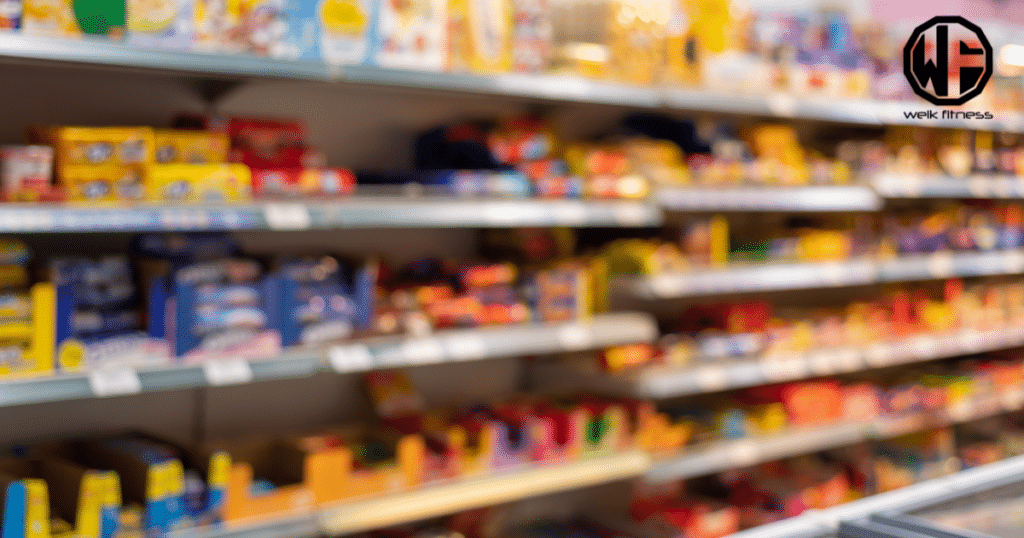
Be careful, as this is one of the food packaging tricks that many people fall for. You can put it in the same category as reading the tabloids at the grocery store checkout. You can’t believe everything you read on the front.
5. Packaging Size
Want to lose weight and get skinny? A skinny box or packaging clearly means you can achieve a slim physique as well, right? Wrong. Another one of the food packaging tricks that brands play on you is with their packaging size. If they are promoting a “healthier for you” product, you can assume the packaging is going to be thin and taller.
Related Article: Is Online Grocery Shopping Going to Be Our New Normal?
When looking at packaging size, many people mention they believe there are more calories in a short and wide package compared to a thin and tall package. In most cases, both products contain the same number of calories, but your mind tricks you into thinking that the thinner packaging size is fewer calories and a healthier option.
Don’t Get FOOLED with Food Packaging Tricks!
Stop getting duped by brands and start understanding the food packaging tricks they are playing on you. Sure, you may feel the urge to grab a product off of the shelf and look at it. Heck, you may even consider buying it! But the first thing you want to do after picking up ANY product is to look at the nutrition label and ingredient list. THAT will tell you everything you need to know about the product. Is it healthy? Unhealthy? Full of junk that the callouts try to disguise? Everything is spelled out on the label — you just need to read it.
Food packaging tricks are put into play to encourage impulse purchases. Now that you understand the five most commonly used food packaging tricks, you can go out there and make better purchasing decisions and improve your health and physique.


*Disclosure: This article may contain affiliate links or ads, which means we earn a small commission at no extra cost to you if you make a purchase through these links. These commissions help support the operation and maintenance of our website, allowing us to continue producing free valuable content. Your support is genuinely appreciated, whether you choose to use our links or not. Thank you for being a part of our community and enjoying our content.
PLEASE CONSIDER SHARING THIS ON YOUR SOCIAL MEDIA TO HELP OTHERS LEARN MORE ABOUT THIS TOPIC.


